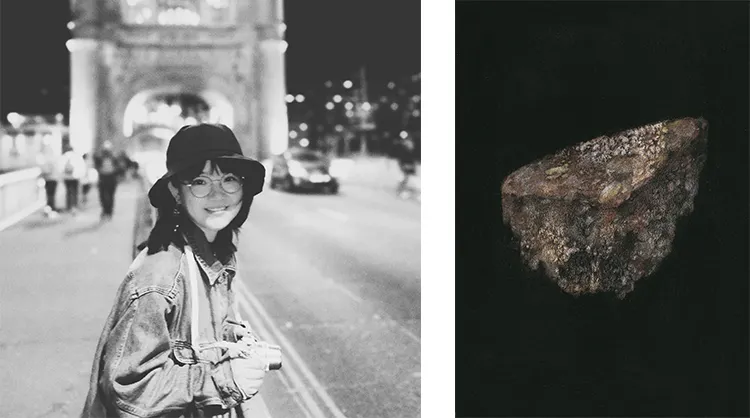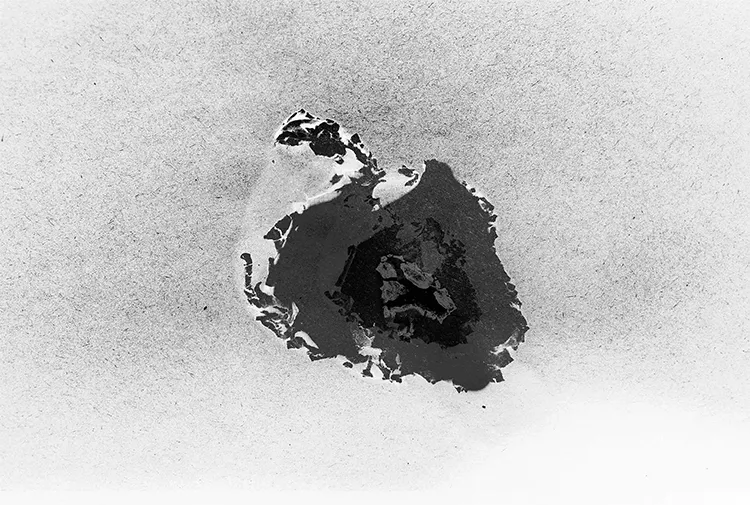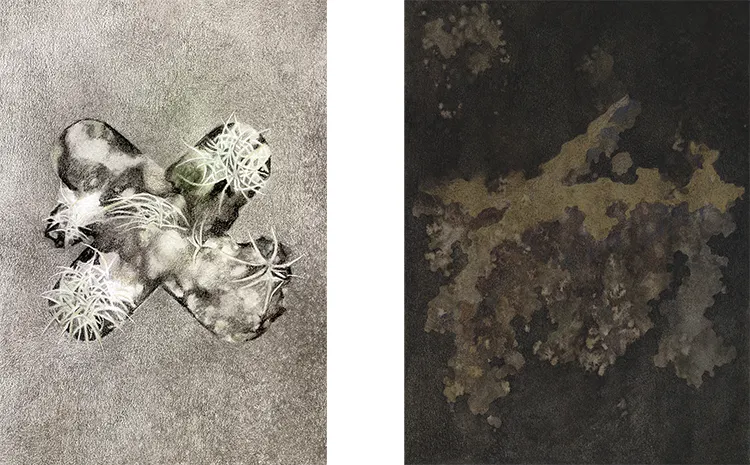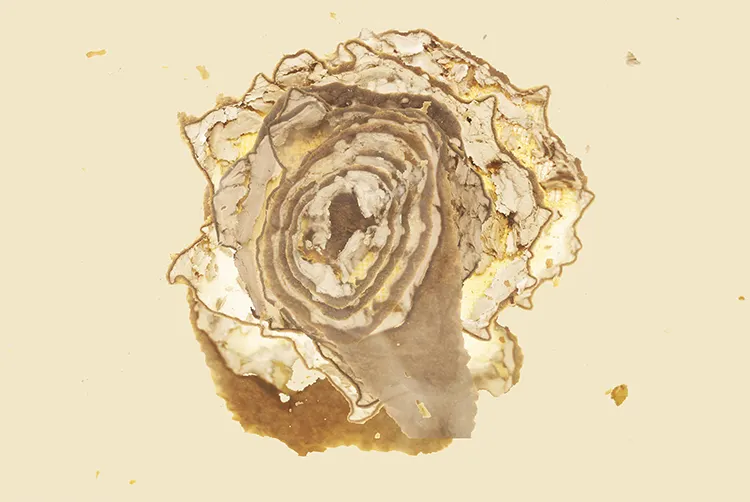“I tend to depict the overlooked, the fleeting, and the vanishing, allowing them to leave marks on the work in some way.”
From Chengdu to London: A Journey of Artistic Discovery
Xieni Zhou’s artistic journey is one of evolution, shaped by diverse experiences across different cultures and disciplines. Growing up in Chengdu, she pursued an undergraduate degree in oil painting at a well-established university before stepping into the publishing world as an editor for a local art press. This role exposed her to a wide range of artistic voices and honed her ability to engage with visual narratives. However, her passion for creating rather than curating ultimately led her to London, where she deepened her artistic practice through formal studies.
Her move to the UK marked a turning point. She first studied drawing at Camberwell College of Arts before refining her focus on illustration at the Royal College of Art. This transition broadened her artistic vocabulary, encouraging her to experiment with new techniques and perspectives. Surrounded by London’s vibrant art scene, Zhou found inspiration in the city’s vast museums, galleries, and archives, which provided her with an expanded understanding of artistic traditions and contemporary visual discourses.
Zhou’s background in both fine art and publishing fosters a unique approach to her work—one that is conceptual yet deeply attuned to the power of storytelling. She continuously seeks to push the boundaries of drawing, treating it not merely as a means of representation but as an evolving dialogue between material, time, and perception. This exploration of transformation and impermanence has become a defining element of her artistic voice.

Xieni Zhou: Mapping the Fleeting and the Forgotten
At the heart of Zhou’s work lies an acute sensitivity to time, change, and the overlooked details of the world around her. She is particularly drawn to the cycles of decay and regeneration, using her art to document fragile moments before they disappear. Through a time-based drawing practice, she examines how shifts in the environment shape human perception of time and space, revealing the subtle imprints left by transient phenomena.
Her compositions often focus on what is ephemeral—fleeting shadows, vanishing traces, and the unnoticed remnants of daily life. Rather than creating fixed representations, she allows these elements to leave their own marks within her work, reinforcing the idea that nothing remains static. This approach aligns with her belief that perception is not passive but an ongoing interaction between the self and the surrounding world.
Informed by theoretical influences, particularly the writings of anthropologist Tim Ingold, Zhou explores the relationship between material and process. Ingold’s view that creation is not an act of imposing form upon inert matter but rather a continuous negotiation with the material world deeply resonates with her practice. By embracing the unpredictability of her mediums, she captures the fluid and evolving nature of existence itself, making each piece an extension of the environment in which it is conceived.

The Studio as a Sanctuary of Thought and Creation
Zhou’s workspace is an intimate extension of her artistic process. Unlike artists who require expansive studios, she thrives in a smaller, carefully curated environment. A well-lit room in her home serves as her creative refuge, filled with sketches, notes, and visual fragments that spark new ideas. A spacious table provides room for drawing and collage, while walls covered in drafts and reference images surround her with a constant stream of inspiration.
While she rarely struggles with distractions once immersed in the act of creation, the challenge often lies in beginning a new piece. To overcome this, she turns to her archive of collected fragments—reading notes, image collages, and sketchbook entries. These elements serve as catalysts, helping her transition into a creative flow. By engaging with past observations, she establishes a sense of continuity, allowing her ideas to evolve organically.
The question of medium is another integral aspect of her practice. She carefully selects materials based on the themes she explores, whether through drawing, paper cutting, or collage. Her fascination with physical traces—the marks left by movement and time—guides her choices. The fragility of paper, the layering of images, and the interplay of gain and loss all contribute to her ongoing exploration of transformation. Recently, she has been drawn to moving images and sound, hinting at future expansions of her artistic language.

Xieni Zhou: Tracing the Unfinished and the Uncertain
One of Zhou’s most significant inspirations came from an unfinished painting by J.M.W. Turner at Tate Britain. Amid a collection of meticulously detailed works, this piece stood out for its ambiguity—a hazy mass of color where objects dissolved into light and shadow. The undefined nature of the painting resonated deeply with her, reinforcing her own fascination with the uncertain and the incomplete.
This encounter profoundly influenced her series Gazing the Ground, where she explores the transformation of urban soil. In these works, she begins with structured, linear frameworks that gradually give way to organic, interwoven patterns. The process mirrors the way soil accumulates and shifts over time, embodying both absence and renewal. By intentionally leaving elements unfinished, she invites the viewer to engage with the work as a living process rather than a fixed image.
Her ongoing project, Soil Remedy, continues this exploration through a broader conceptual lens. Originally presented as an illustrated publication for her graduate degree show, the project examines the spiritual absence of soil in the Anthropocene, drawing from folklore about soil consumption as a healing practice. Zhou envisions expanding this body of work beyond its original format, potentially incorporating drawing and moving images to further examine the layered histories embedded in the earth beneath us.








